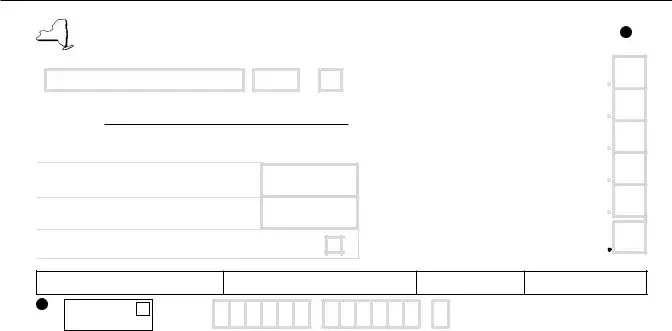The IRS Form 941, Employer's Quarterly Federal Tax Return, closely mirrors the NYS-1 form in structure and purpose. Both documents are essential for employers to report tax withholdings from their employees' wages. They include details about the total amount of taxes withheld and must be filed at specific times throughout the year. The key difference lies in the jurisdiction they serve; while the NYS-1 is for New York State, Form 941 covers federal tax obligations.
W-2 forms are annual reports that showcase the amount of money employees earn and the taxes withheld from their salaries. Similar to the NYS-1 form, W-2 forms are crucial for both employees and the government to ensure the correct taxes are paid. The main likeness is in their focus on reporting income and withholdings to tax authorities, but while the NYS-1 form is used by employers on a more frequent basis, W-2 forms provide an annual summary.
The W-3 form, Transmittal of Wage and Tax Statements, works in tandem with the W-2 form but is designed for the Social Security Administration. It summarizes the total earnings, Social Security, and Medicare wages for all employees of a company. Like the NYS-1 form, it plays a vital role in reporting tax and wage information to governmental entities, ensuring compliance with tax laws and aiding in the accurate recording of employees' earnings and contributions.
State-specific quarterly unemployment tax forms, such as the NYS-45 form in New York, have similarities to the NYS-1 form in that they both require detailed employment tax information from employers within the state. These forms are critical for reporting wages paid and taxes withheld, contributing to the state's ability to provide unemployment benefits. They differ primarily in their specific focus on unemployment insurance contributions versus general tax withholdings.
The 1099 forms, particularly the 1099-MISC and 1099-NEC, are important for reporting income outside of traditional employment, including freelance and independent contractor earnings. Similar to the NYS-1 form, they are crucial for tax reporting and ensuring individuals and entities pay the correct amounts. The overlap lies in their shared goal of maintaining tax compliance, though they cater to different categories of income earners.
The IRS Form 945, Annual Return of Withheld Federal Income Tax, is akin to the NYS-1 form but on an annual basis, covering withheld federal income tax from non-payroll sources. Both forms are pivotal in tracking withheld taxes and ensuring these are properly reported to appropriate tax authorities. They differ primarily in their coverage, with Form 945 focusing on specific non-payroll income, while NYS-1 handles payroll tax withholdings within New York State.
The IRS Form 940, Employer's Annual Federal Unemployment (FUTA) Tax Return, although different in its specific focus on unemployment tax, shares the core purpose of reporting and paying taxes pertinent to employment. Like the NYS-1 form, it's integral for employers to fulfill their tax-related responsibilities. Both play crucial roles in the broader context of employment tax compliance, albeit targeting distinct tax categories.

